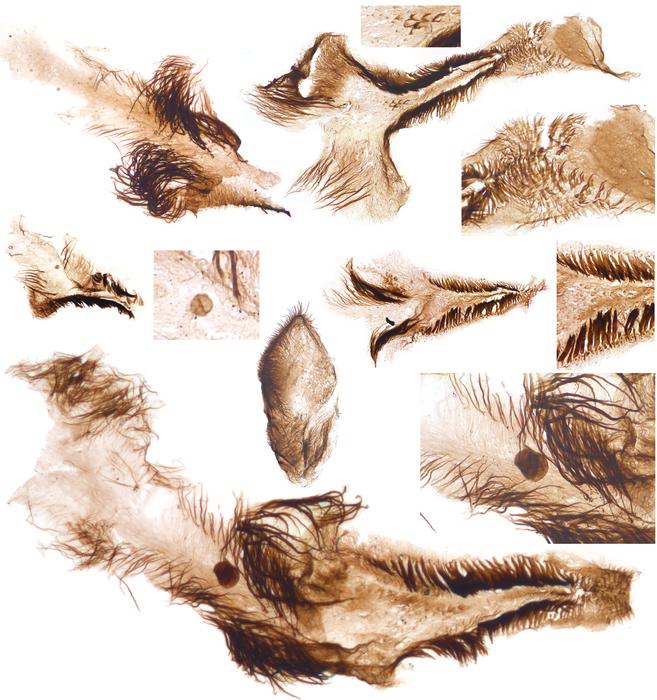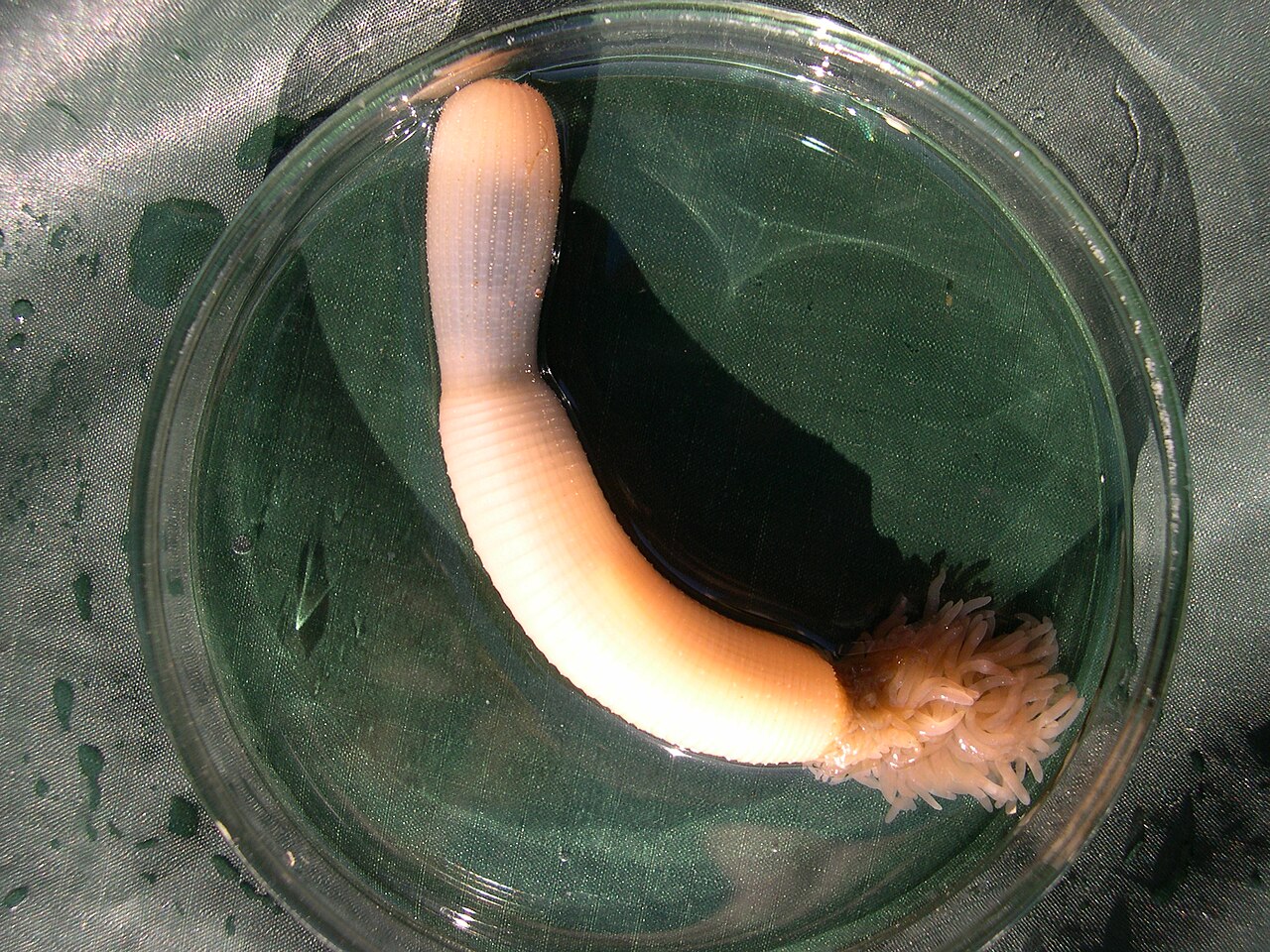The Grand Canyon is undeniably a wonder of nature – and according to a new paper from a team of palaeontologists and geologists, it always has been. Half a billion years ago, long before humans were around to gape in awe or plummet to their selfie-related deaths, the canyon was apparently a hub of biodiversity – an evolutionary “Goldilocks zone”, the team write, filled with organisms boasting weird and wonderful adaptations for life.
And they’re really hoping you’ll concentrate on that, rather than what the IFLScience team noticed when we first saw this paper.
Two words: penis worm.
A world of weird
Okay, “penis worm” is underselling it. In fact, the Grand Canyon was something of a treasure trove of well-preserved fossils, with the team uncovering more than 1,500 Cambrian-era worms, crustaceans, and mollusks altogether.
That number alone would be a good day for your average palaeontologist, but these are extra-special fossils: they’re squishy. That’s unusual for a fossil – the soft parts are usually the first to get broken down and disappear over time, while hard parts like bones stick around for longer.
That’s a big problem for Cambrian-era organisms, though, since it seems a whole lot of them were squishy. But every so often, conditions conspire to preserve even these worms and mollusks – and the team behind the new study figured the Grand Canyon might just be such a spot.
“The geology of the Grand Canyon, which contains lots of fine-grained and easily split mud rocks, suggested to us that it might be just the sort of place where we might be able to find some of these fossils,” Giovanni Mussini, a PhD student in Cambridge’s Department of Earth Sciences and first author of the paper, said in a statement on the finds.
But by dissolving the rocks that these ultra-prehistoric beasties were preserved within, and sieving multiple times, the team were able to discover thousands of microscopic fossils and trace fossils – that is, fossilized evidence of the organisms’ movements and behavior. Altogether, it revealed a staggeringly diverse world, filled with weird and exotic organisms specially evolved for the Cambrian-era ecosystems.

Trace fossils of crustaceans from the Grand Canyon study.
“We can see from these fossils that Cambrian animals had wide variety of feeding styles used to process their food, some which have modern counterparts, and some that are more exotic,” explained Mussini.
“These rare fossils give us a fuller picture of what life was like during the Cambrian period,” he said. “By combining these fossils with traces of their burrowing, walking, and feeding – which are found all over the Grand Canyon – we’re able to piece together an entire ancient ecosystem.”
Visit the Grand Canyon in the Cambrian era, and you’d see slug-like mollusks, surviving off algae and bacteria that they would scrape off rocks using chains of teeth on their feet. There’d be crustaceans similar to brine shrimp scuttling around, sweeping up particles of food with their hairy limbs and grinding them up with tiny ridged teeth – some of the fossils are so well-preserved that their plankton prey are still visible around the mouths.
“These were cutting-edge ‘technologies’ for their time, integrating multiple anatomical parts into high-powered feeding systems,” Mussini said.
But far odder – and much more numerous – was a third type of animal. And yes, it’s the one you’ve been waiting for.
Penis worm?
Look, we’re not going to lie: this is not as awesome as it sounds. The “penis worm” is a legit animal – or, more accurately, a whole phylum. Their fancy name is Priapulida, which sounds way less snicker-worthy until you learn that they’re literally named after the Greek god of dicks. Evidently, these buggers put the scientists who discovered them in mind of something very particular.
Frankly, we can see why.

A modern day penis worm, Priapulus caudatus, from the Berents sea in Russia.
Ironically, though, the nomenclature actually gets it backwards – the worms came first. No, seriously: penises enter the evolutionary record about 425 million years ago, but penis worm fossils have been found from much further back. In Canada, the Burgess Shale deposit has yielded soft-part imprints of the phallic minibeasts dating from at least the middle Cambrian period, and potentially as early as the Precambrian–Cambrian transition more than 540 million years ago.
The Grand Canyon penis worms, however, “are much more complex than any of its counterparts from the Burgess Shale,” Mussini told Science News – and by “complex”, he presumably means “weird as all heck”. The team found close to 1,000 of these now much less phallic-seeming beasties in their sweep, making them by far the most populous fossils there.
Dubbed Kraytdraco spectatus by the team – yes, after the Star Wars dragon – the penis worms all follow the same basic blueprint: an unsegmented body in three parts, one of which is retractable like a snail eye, and another which is, no exaggeration, an invertible throat covered entirely in teeth.
And you can sense the excitement as the researchers describe the multitude of dentition: “Priapulid pharyngeal teeth are U- to V-shaped sclerites,” they write, which “show a diagnostic combination of features: a ridge-like marginal ‘arch,’ a basal ‘pad’ of thinner cuticle, a spinose, distally directed terminal ‘prong,’ and lateral ‘denticles’ consisting of hair- or spine-like projections extending from the arch and pointing distally.”
And why would you want all these may and varied teeth inside your throat, you ask? Well, because when prey goes past, you can simply vomit your throat out of your body and catch it. Ain’t evolution beautiful?
An Eden for evolution
Whether a prawn or a penis worm, there evidently was something special about the Grand Canyon in the Cambrian era.
“There are only some kinds of settings which can really launch evolutionary innovation forward,” Mussini told Science News. “And the Grand Canyon was probably one of them back in the Cambrian.”
It was closer to the equator than it is now, with an oxygen-rich water supply perfectly balanced between “too little” and “too much”; food was abundant; the climate was stable – perfect conditions for organisms to stretch their evolutionary legs.
“Animals needed to keep ahead of the competition through complex, costly innovations,” said Mussini, “but the environment allowed them to do that.”
“In a more resource-starved environment, animals can’t afford to make that sort of physiological investment,” he explained. “It’s got certain parallels with economics: invest and take risks in times of abundance; save and be conservative in times of scarcity.”
“There’s a lot we can learn from tiny animals burrowing in the sea floor 500 million years ago.”
The study is published in the journal Science Advances.
Source Link: Half A Billion Years Ago, The Grand Canyon Was Filled With Penis Worms